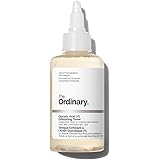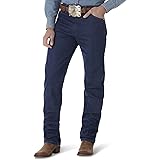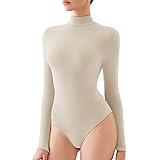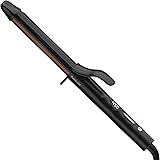In a world increasingly focused on environmental well-being, the concept of a green lifestyle has moved from a niche interest to a global imperative. The video above, from the Self-Care Podcast for English Learners, introduces us to the vital topic of sustainable fashion and its connection to living more mindfully. It highlights how our everyday choices, particularly concerning our wardrobes, have a significant impact on the planet.
For many, the idea of embracing sustainable practices can feel daunting, especially when encountering new vocabulary in a second language. However, as Sophia and Michael wisely discuss, it’s about making small, achievable adjustments, not drastic overnight transformations. This approach makes adopting a more planet-friendly way of living, including how we dress, both accessible and empowering.
Understanding Sustainable Fashion: More Than Just Clothes
At its core, sustainable fashion refers to the practice of designing, producing, consuming, and disposing of clothing in ways that minimize environmental harm and promote social well-being. It’s a broad term encompassing everything from the materials used to the labor practices involved in manufacturing garments. The video aptly simplifies this, explaining that it’s about choosing clothes that don’t hurt our planet, opting for items that last longer or are made from natural, renewable materials.
This stands in stark contrast to “fast fashion,” a model that prioritizes rapid production of trendy, inexpensive clothing. While appealing to our desire for new styles at low prices, fast fashion exacts a heavy toll. The hosts of the Self-Care Podcast touched upon a truly shocking statistic: the fashion industry is one of the world’s most polluting, generating more carbon emissions than international flights and shipping combined. This comparison paints a vivid picture of the sheer scale of its environmental footprint. Furthermore, the industry consumes vast amounts of water, contributes to textile waste in landfills, and often relies on harmful chemicals for dyeing and processing fabrics.
Therefore, transitioning towards ethical clothing and sustainable fashion isn’t merely a trend; it’s a critical shift toward responsible consumption. It’s about recognizing that our clothes, like any other product, have a lifecycle and associated environmental costs.
The Environmental Footprint of Our Wardrobes
Consider the journey of a single T-shirt from a fast fashion retailer. It might be made from conventionally grown cotton, which requires significant amounts of water and pesticides. Then, it’s dyed using chemicals that can pollute local water sources. After manufacturing, often in countries with lax environmental regulations, it’s shipped across the globe, adding to carbon emissions. Finally, if it’s cheaply made, it might last only a few washes before losing its shape or color, destined for a landfill where it can take hundreds of years to decompose.
This cycle illustrates why reducing our carbon footprint in fashion is so important. By understanding these processes, we can begin to make more informed choices. Sustainable fashion seeks to disrupt this linear “take-make-dispose” model, advocating instead for a more circular approach where resources are reused, recycled, and valued for their longevity.
Practical Pathways to a Sustainable Wardrobe
The beauty of sustainable fashion lies in its practicality. You don’t need a designer budget or a radical overhaul to start. As Sophia and Michael emphasize, it’s about simple, accessible steps. Think of it like nurturing a garden: small, consistent efforts lead to flourishing results.
1. Embrace Second-Hand Style: The Thrill of Thrift Shopping
One of the most immediate and impactful ways to practice sustainable fashion is to buy second-hand. Sophia’s enthusiasm for her vintage jacket found at a thrift store perfectly encapsulates this. Thrift shopping, consignment stores, and online second-hand platforms like Depop or ThredUp offer a vast array of unique items. It’s like a treasure hunt, as Michael describes, where every find tells a story. By choosing pre-owned clothes, you’re not only extending the life of existing garments but also reducing the demand for new production, thereby lessening environmental strain and textile waste.
2. Invest in Quality, Not Quantity: Durability Over Disposable
The anecdote of Michael’s ten-year-old T-shirt is a powerful testament to the value of quality. Inexpensive, poorly made clothing often falls apart quickly, leading to a constant cycle of buying replacements. Instead, consider investing in fewer, higher-quality pieces that are designed to last. This approach might seem more expensive upfront, but it often proves more economical in the long run. Durable items not only withstand the test of time but also maintain their appearance and comfort, making them a more satisfying purchase. When seeking new items, look for well-constructed garments made from eco-friendly materials like organic cotton, linen, hemp, or recycled fabrics.
3. Master the Art of Clothing Care: Extending Lifespans
Once you own your clothes, how you care for them plays a crucial role in their longevity. Simple habits can significantly extend the life of your garments: * **Wash in cold water:** This not only saves energy but also helps preserve fabric colors and integrity. * **Air dry:** Ditching the dryer reduces energy consumption and is gentler on clothes, preventing shrinkage and wear. * **Use gentle detergents:** Harsh chemicals can break down fabric fibers over time. * **Learn basic repairs:** A loose button, a small tear, or a hem coming undone doesn’t have to mean the end for a garment. Basic sewing skills can save many items from the landfill. There are countless online tutorials available for simple fixes.
These mindful practices are akin to taking care of a prized possession; the better you treat it, the longer it serves you well.
4. Get Creative with Styling: Maximize Your Existing Wardrobe
Sustainable fashion doesn’t mean sacrificing personal style. In fact, it encourages creativity. Before buying something new, look at your existing wardrobe with fresh eyes. Can you layer a dress differently? Can you accessorize a simple top to create a new look? Michael suggests taking one dress and wearing it five different ways, a concept that celebrates individual expression through resourcefulness. This approach not only saves money but also fosters a deeper appreciation for what you already own, allowing your personal style to evolve without constant consumption.
Beyond the Wardrobe: Embracing a Holistic Green Lifestyle
As the podcast hosts brilliantly connect, sustainable fashion is merely one facet of a broader green lifestyle. This holistic approach means making environmentally conscious choices across all areas of your life. It’s about recognizing that everything is interconnected, from the food we eat to how we travel and the products we buy for our homes. For instance:
- **Mindful Consumption:** Asking yourself if you truly need something before buying it, whether it’s clothing, gadgets, or groceries.
- **Reducing Waste:** Bringing reusable bags to the grocery store, opting for products with minimal packaging, and composting food scraps.
- **Conserving Resources:** Turning off lights, conserving water, and choosing energy-efficient appliances.
- **Supporting Local & Ethical:** Buying from local farmers, artisans, and businesses that prioritize fair labor and environmental practices.
Adopting a green lifestyle isn’t about perfection; it’s about progress. It’s a continuous journey of learning and adaptation, where small, consistent actions collectively create a significant positive impact. Each mindful choice you make is a step towards a more sustainable and harmonious existence.
Empowering English Learners: Vocabulary and Confidence in Sustainable Living
For English learners, this discussion on sustainable fashion and green living offers a dual benefit. It’s an opportunity to expand your vocabulary with terms like “carbon emissions,” “textile waste,” “thrift shopping,” “eco-friendly,” and “mindful consumption.” Simultaneously, it empowers you with knowledge about a critical global issue and practical ways to contribute positively.
The confidence that comes from making these responsible choices is invaluable. As Sophia points out, wearing a unique thrift store find not only feels good because it’s economical but also because you know you’re doing something beneficial for the planet. This self-assurance extends beyond clothing, seeping into other areas of a green lifestyle. Every small step taken, every conscious decision made, reinforces a sense of purpose and connection to the larger world.
Remember, embarking on a journey of sustainable fashion and embracing a green lifestyle is a personal and evolving process. It’s about finding what works for you, within your means, and at your own pace. By making mindful choices, we can all contribute to a healthier planet and a more confident, self-caring way of life.











